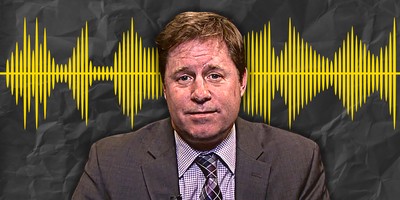A Saturday Evening Post reporter asked, in 1932, John Maynard Keynes if there had ever been anything like the Great Depression. Keynes replied, “Yes. It was called the Dark Ages and it lasted 400 years.” While the Great Recession is not so severe as was the Great Depression, it begins to appear that the world is enduring something that could be called “The Little Dark Age.”
It is odd that the long stagnation has not emerged as a focus of the presidential election — from either nominee or either party. That possibly is because both parties, embarrassingly enough, are at fault. America is entering its fifth decade of punk (less than 3% average annual GDP) growth and second decade of pure stagnancy — growth arguably averaging under 2%. Less than 3% is bad, but less than 2% is slower than population growth. That implies a severe absence of opportunity to flourish: a “Little Dark Age.”
Some among the privileged elite are settling for this, complacently, and dubbing it the “new normal.” Some, such as Obama, are responding to it with policies of redistribution — policies which supply sider Jude Wanniski argued are desired by the electorate for periods of economic contraction. It doesn’t have to be this way.
The classical supply siders taught more than tax rate cuts… although the political community has yet to really internalize this. British political economist Peter Bauer, in reviewing Wanniski’s The Way the World Works , summed up the essence of Wanniski’s primary argument, an argument that he won and was assimilated by the political culture. Tax rate cuts have come to define Republican doctrine:
According to Mr. Wanniski the task of political leadership is to find the rate of taxation which maximizes production, and is consistent with the distribution of income conductive to welfare. When the rulers understand this central issue and act on it, the society prospers and progresses; when they fail there is decline, conflict and chaos.
Recommended
Wanniski’s work had a major impact on vice presidential candidate Paul Ryan. He, in fact, did not advocate a single-variable model. His model included a second key variable, one that has not yet been assimilated by the political class: monetary policy. Wanniski’s inadequately appreciated essay A Gold Polaris recognizes the difficulty that politicians chronically have with monetary policy:
Monetary policy has always been most difficult for political leaders to understand, but never before has there been a greater need for it. “Economists can view inflation from several different time and space perspectives,” Mundell wrote 20 years ago, when the world was just entering the monetary problems that have haunted it since. “It is seldom, however, that contemporary observers fully understand its causes, or know how to correct it, at least efficiently.”
Wanniski then observes:
To the ’49ers who headed for California in the last century, the dream was not of precious metal, but of abundance and opportunity, fertility and freedom. In the same way, the pioneers who left the Old World for America a hundred years ago were told of “streets paved with gold,” but the image was understood to mean freedom and opportunity. The Golden Calf, we have been taught, was a false god, a physical idol. It was rather the concept of the Golden Rule that infused the spirit of this New World. Do unto others as you would have them do unto you. It is this concept that has interested me in monetary issues this past quarter century — a Golden Rule in our everyday business of living. … This central idea is at the heart of human civilization, the very essence of almost all religious and civil codes. It is, of course, the meaning of the Gold Standard in the monetary realm. It relates not to golden specie in bulk, to bars of gold bullion piled high in the hoard of King Midas, but to the trust that connects strangers to each other in the marketplace.
Anticipating Occupy Wall Street Wanniski observed:
The greatest difficulty in returning to a gold Polaris is that those who benefit most, the mass of ordinary Americans, are not organized for that goal. And the elites who benefit from an unstable money still represent a powerful force for continuance of that instability. Just as there is an enormous industry in the United States devoted to grappling with the complexities of the federal and state tax codes, there is an industry devoted to the world of monetary instability. The entire financial services industry is geared in one way or another to earn its way by guiding the commercial world at home and abroad through the choppy waters of dollar fluctuations. With a gold dollar once again fixed in the galaxy, most of these costly functions would be unnecessary and would soon disappear.
There seems to be no recognition at all by the Obama administration, and little enthusiasm among Romney’s economists, for decisive presidential action that could lead to re-establishing the classical gold standard. But the GOP platform’s call for a new Gold Commission, like the Reagan Gold Commission on which Ron Paul and Lewis Lehrman (whose Institute this writer professionally advises) served, gives the gold standard new visibility, legitimacy and momentum. Vice presidential nominee Paul Ryan may be the crucial factor. Nick Carey of Reuters reports in Insight: Ryan’s Economic Thinking is More Reagan Than Tea Party:
When Cesar Conda was a Republican staff director on the U.S. Senate’s small business committee in 1991, he often was badgered with questions on economic theory by Paul Ryan, then a 21-year-old intern.Ryan, now the Republican candidate for vice president, “worked in the mail room and would constantly pop his head into my office to ask questions about supply-side economics,” Conda said. “I had a lot of work to do, so I gave him a couple of books to keep him busy.”
Conda, now chief of staff for conservative Florida Senator Marco Rubio, lent Ryan Jude Wanniski’s “The Way the World Works” (1978), which Conda called “the Bible” for the 1981 Kemp-Roth tax cut that lowered the top U.S. income tax rate to 50 percent from 70 percent….
Ryan is an inquisitive man and committed to big ideas. He is not one of the “slaves of some defunct economist” as Keynes so wittily put it in The General Theory of Employment, Interest, and Money. Yet his grasp of Wanniski makes him the ideal figure to share with President Romney the second, now more imperative, aspect of the supply side model: the central importance of good money. Romney and Ryan stand for counsels of rectitude. Wanniski, in A Gold Polaris, devotes an entire subsection to the subject of “Money and Morality”:
We speak not only of the collapse of financial institutions and enterprises in the absence of a fixed monetary standard, but also of the collapse of households and families by the tens, perhaps hundreds of millions. In the absence of a monetary standard to fix the value of contracts between people, the linkages between debtors and creditors were loosened and so were the linkages between effort and reward.
The gold standard has great appeal both on moral and utilitarian grounds. Its appeal lies both in its embodiment of American principles and its promise to restore world prosperity.
Paul Ryan, if elected, will have battles ahead of him. He has proved himself tenacious and will be well positioned to drive home the key importance, for job creation, of monetary reform. Ryan can be the indispensable figure to empower Romney to end, for the next generations, the Little Dark Age in which we now are mired.






















Join the conversation as a VIP Member